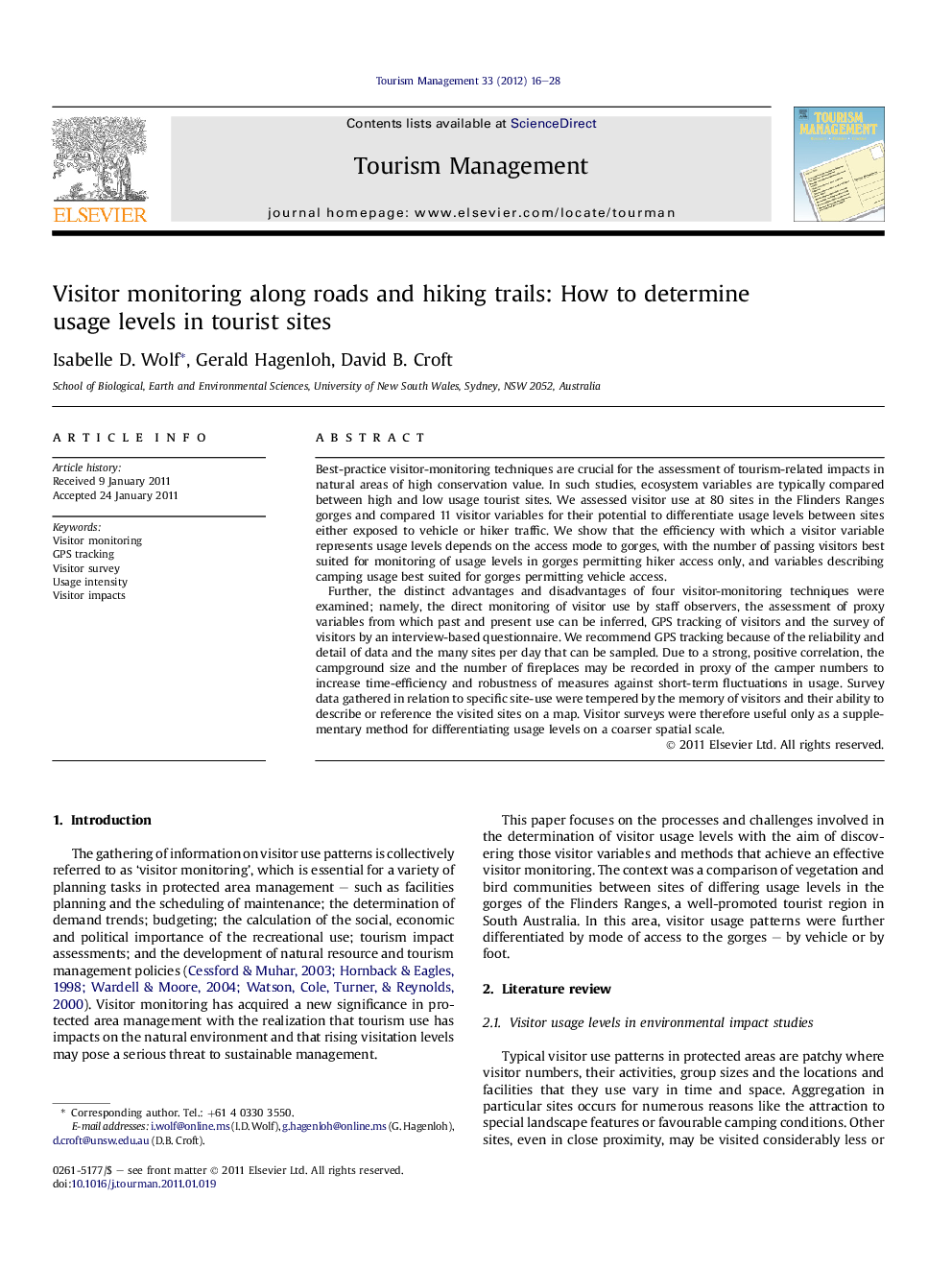| Article ID | Journal | Published Year | Pages | File Type |
|---|---|---|---|---|
| 1012576 | Tourism Management | 2012 | 13 Pages |
Best-practice visitor-monitoring techniques are crucial for the assessment of tourism-related impacts in natural areas of high conservation value. In such studies, ecosystem variables are typically compared between high and low usage tourist sites. We assessed visitor use at 80 sites in the Flinders Ranges gorges and compared 11 visitor variables for their potential to differentiate usage levels between sites either exposed to vehicle or hiker traffic. We show that the efficiency with which a visitor variable represents usage levels depends on the access mode to gorges, with the number of passing visitors best suited for monitoring of usage levels in gorges permitting hiker access only, and variables describing camping usage best suited for gorges permitting vehicle access.Further, the distinct advantages and disadvantages of four visitor-monitoring techniques were examined; namely, the direct monitoring of visitor use by staff observers, the assessment of proxy variables from which past and present use can be inferred, GPS tracking of visitors and the survey of visitors by an interview-based questionnaire. We recommend GPS tracking because of the reliability and detail of data and the many sites per day that can be sampled. Due to a strong, positive correlation, the campground size and the number of fireplaces may be recorded in proxy of the camper numbers to increase time-efficiency and robustness of measures against short-term fluctuations in usage. Survey data gathered in relation to specific site-use were tempered by the memory of visitors and their ability to describe or reference the visited sites on a map. Visitor surveys were therefore useful only as a supplementary method for differentiating usage levels on a coarser spatial scale.
